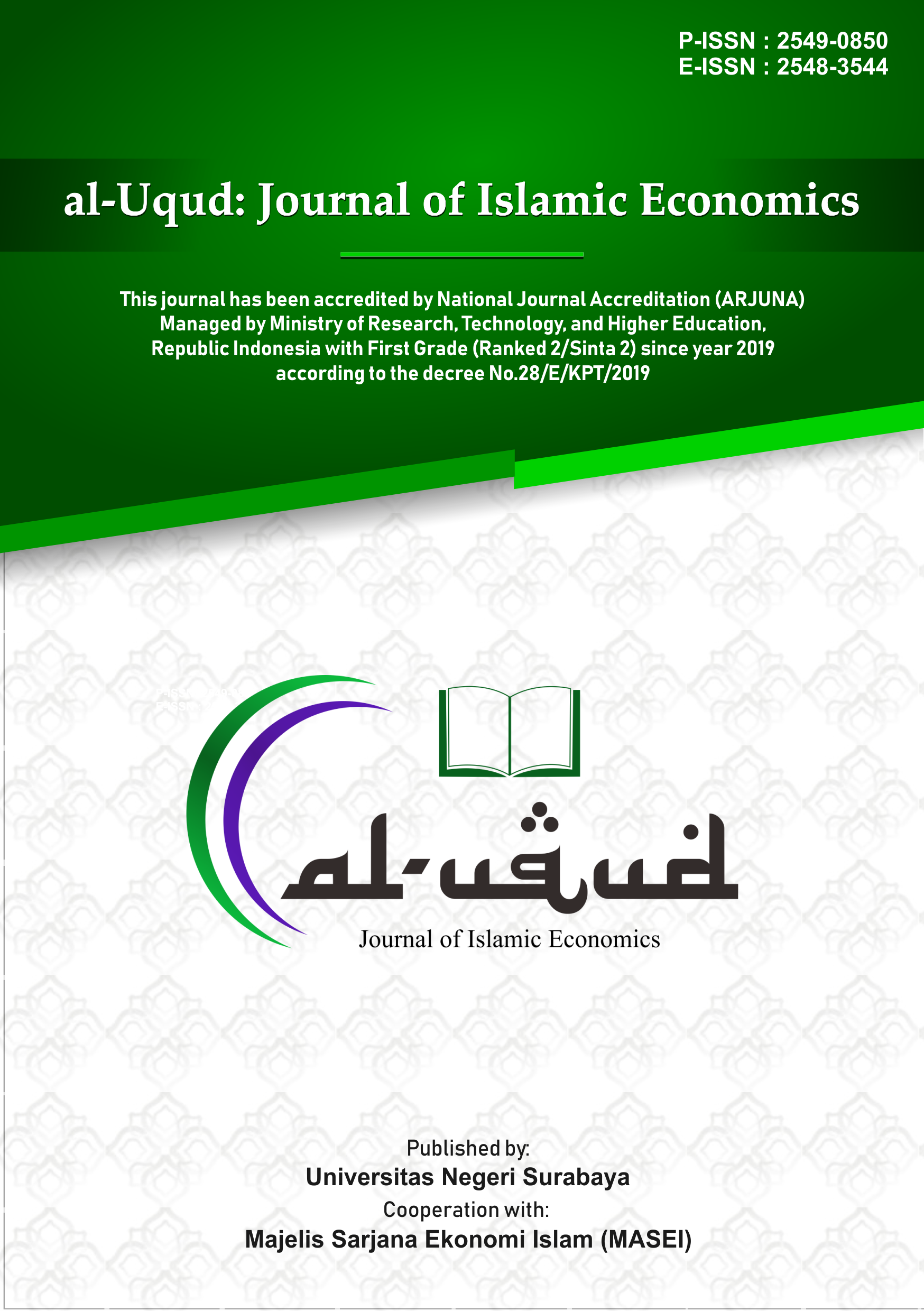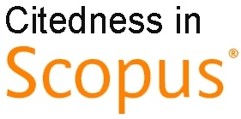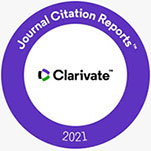Creative economy development strategy in eco-print industry: SOAR Analysis and Sharia Perspective
DOI:
https://doi.org/10.26740/aluqud.v7n2.p217-228Keywords:
Creative Economy, Eco-print, SOAR Analysis, Sharia PerspectiveAbstract
This research aims to develop a creative economy eco-print in Kediri Residency through SOAR analysis and sharia perspectives. This study used qualitative methods. Primary data was obtained from interviews with eco-printers, and secondary data from documents and internet sources. The analysis technique uses an interactive model that describes the overall field research process. The results of the SOAR analysis in the study show that the strength of the eco-print industry in Kediri Residency lies in the availability of raw materials, product quality, and relatively affordable prices. In terms of opportunities, it can open employment opportunities and potential markets from within and outside the country. The aspirations indicate the need for product development from professional institutions and collaboration. The research results are business development, increased sales, and eco-friendly lifestyle trends. In the analysis of the Sharia perspective, it can be concluded that the eco-print business has implemented the principles of Tauhid (rest at prayer times), 'adl (wages according to working hours, bonuses according to sales), Khilafah (basic principles of Islamic financial accounting), Nubuwwah (wisdom, responsibility, communication, and marketing), and Ma'ad (quality of raw materials and product innovation). This research implies that using Islamic values in business can help SMEs increase their productivity, which will ultimately positively impact SME performance and the development of the creative economy.
References
Ariesta, A. (2021). Bangga! Industri Ekraf RI Sumbang PDB Nasional Rp1.274 T, Ketiga Terbesar Di Dunia. Economics IDX Channel. Economics IDEconomics IDX ChannelX Channel. https://www.idxchannel.com/economics/bangga-industri-ekraf-ri-sumbang-pdb-nasional-rp1274-t-ketiga-terbesar-di-dunia
Badan Ekonomi Kreatif. (2019). Creative Economy Outlook 2019 (OPUS Indonesia). Creative Economy Agency, Republic of Indonesia.
Florida, R., and Adler, P. (2019). The Creative Class and the Creative Economy. In Reference Module in Neuroscience and Biobehavioral Psychology. https://doi.org/10.1016/B978-0-12-809324-5.23766-8
Hapsari, Mega Tunjung. (2020). Analisis Strategi Pemasaran dengan Metode SWOT dan Perspektif Syariah pada PT Natural Nusantara Yogyakarta. At-Tijaroh: Jurnal Ilmu Manajemen dan Bisnis Islam, 6(2), 251-260. https://doi.org/10.24952/tijaroh.v6i2.2715
Iqbal Muhammad. Prameswara Nadya, Saripudin. (2021). Islamic Fintech Growth Prospects in Accelerating MSMEs Growth during the Covid-19 Pandemic: Evidence in Indonesia. International Journal of Islamic Economics and Finance Studies, 7(2), 126-140. https://doi.org/10.25272/ijisef.857488
Karim, Adiwarman A. (2018). Ekonomi Mikro Islam. Edisi 5 Ce. Jakarta: Rajawali Pers.
Miles, Matthew B., A. Michael Huberman, dan Johnny Saldana. (2014). Qualitative Data Analysis: A Methods Sourcebook. 3rd Edition. United States Of America: Sage Publications.
Ministry of Communication and Informatics. (2021). Ekonomi Kreatif Sumbang Pertumbuhan Ekonomi Tertinggi. 2021. https://kominfo.go.id/.
Shaikh, Salman Ahmed. (2021). Using Fintech in Scaling Up Islamic Microfinance. Journal of Islamic Accounting and Business Research, 12 (2), 186-203. https://doi.org/10.1108/JIABR-10-2019-0198
Stavros, J. M. and Hinrichs, G. (2009). The Thin Book of SOAR: Building Strengths-based Strategy. Bend, OR: Thin Book Publishing.
Stavros, J. M. and Saint, D. (2009). SOAR: Chapter 18: Linking Strategy and OD to Sustainable Performance. In W.J. Rothwell, J.M. Stavros, R. Sullivan, and A. Sullivan, Practicing Organization Development: A Guide for Leading Change. San Francisco: CA: Jossey-Bass.
Downloads
Published
How to Cite
Issue
Section
License

This work is licensed under a Creative Commons Attribution 4.0 International License.
CC BY 4.0 Abstract views: 354
,
Abstract views: 354
, PDF Downloads: 294
PDF Downloads: 294








